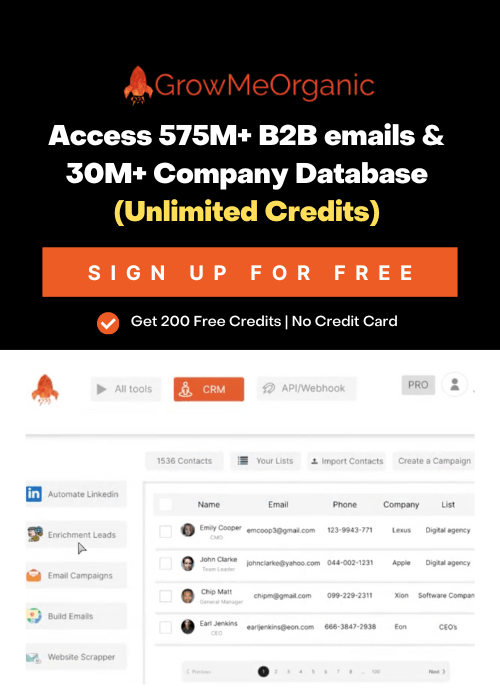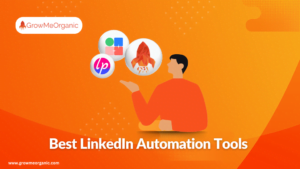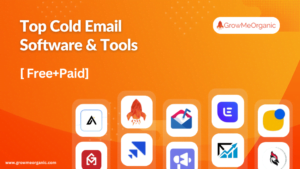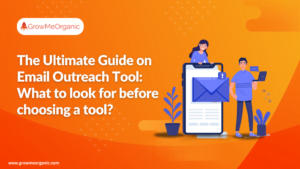Few things are more frustrating than sending loads of emails and getting no response from prospects. If this happens more often than not, you may start wondering what you’re doing wrong. However, your messages could go unanswered for reasons that have nothing to do with you.
Perhaps the recipient had a full plate and missed your email or forgot to answer. There’s also a chance the emails you send end up in people’s spam folders. The latter scenario is more likely if you reach out to cold leads.
What you should do next is send a series of outreach follow-up emails. This step alone can increase response rates, keep your leads warm, and drive conversions. The key is to follow up in a non-intrusive manner that sparks interest and engagement.
Why Follow-Up Emails Are Crucial to Sales Success
In today’s digital age, consumers are flooded with marketing messages, from online ads and TV commercials to cold calls. Many have hundreds, if not thousands, of unread email messages in their inboxes, and some go as far as using spam filters, which often block legitimate emails.
Say, you build an eCommerce website aimed at corporate clients in need of enterprise software. Everything goes smoothly, except for your outreach efforts. You make a list of contacts and send out introductory emails, but no one replies.
By following up, you have higher odds of getting an answer. It’s also an opportunity to share further insights into your products or services, making it easier to onboard prospects. In some cases, this approach can help you revive old relationships.
According to a Backlinko study, 91.5% of outreach emails are ignored. Sending just one follow-up can increase response rates by around 66%, and the chances of hearing back are even higher if you follow up multiple times.
Backlinko also found that sending emails and follow-ups to several contacts at the same organization can boost response rates by over 90%. Other practices, such as personalizing your subject lines and email body, can further improve response rates.
The more people read your message, the better your odds of making a sale—even if it doesn’t happen right away.
Craft Follow-Up Emails That Generate Responses
Cold outreach is difficult, given that you’re contacting someone who may not know anything about your business and products. However, just because your initial email goes unnoticed doesn’t mean the prospect isn’t interested.
With that in mind, craft a series of follow-up emails that provide added value to the recipient. Personalize your messages to make them more engaging and ensure they bypass those pesky spam filters.
Here’s how to do it right.
Decide on the Timing and Frequency
First, decide when and how often you’ll send follow-up emails.
Regarding the “when,” it’s best to do it during the recipient’s business hours. Otherwise, they might be at home or on the go and ignore your message.
Follow up a few days but no longer than a week after sending out the initial email. The longer you wait, the lower the likelihood of a reply. However, you should still give the recipient at least two days to get back to you.
As far as frequency goes, there are no hard rules on how many times you should follow up. Sending three or four follow-ups should be enough, but it’s okay to send up to nine messages—depending on your product and industry.
For example, the Backlinko study suggests that sending at least three follow-ups results in the highest overall response rate. Just make sure you space out your emails to avoid being intrusive.
Use Follow-Up Email Templates
Go online and search for follow-up email templates—or create your own. After that, tailor them to each recipient.
Say you sell project management software for small to medium-sized businesses. Below is an example of a follow-up email you could send a few days after the initial outreach:
Straight-to-the-Point Format
Subject Line: “Still struggling with project management? ”
Hi (Recipient’s Name),
Have you had a chance to read our previous message about (your product’s name)? We’re happy to answer any questions you may have.
We know life can get busy, but we’re reaching out because we’ve recently helped enterprises similar to (recipient’s company) save up to (amount of money) in project management costs and increase efficiency by X%.
[Add a screenshot or report]
Drop us a line to discuss your needs and see how we can help.
Best regards,
(Signature)
With this approach, you’re offering your help without being pushy. At the same time, you provide additional information, such as a clear example of the value your product can bring to organizations.
Automate Whenever You Can
To save time, automate your outreach and follow-ups with a software product like GrowMeOrganic. This strategy allows you to contact more leads and personalize your emails at scale without spending hours in front of the screen.
When a prospect responds, they’ll automatically receive a confirmation email. Get back to them within one business day to answer their questions and share further insights.
Email automation makes it easier to track your outreach efforts. You can monitor open rates, click-through rates, and other metrics to see what works and what doesn’t.
Personalize Your Communications
According to Backlinko, emails with personalized subject lines have 32.7% higher response rates than generic emails. For best results, keep the subject line between 36 and 50 characters.
A good strategy is to include the recipient’s name in the subject line and email body. Go one step further and establish common ground by mentioning something you have in common, such as a recent event you both attended.
Most importantly, tailor your message to their business needs. If, say, you sell multiple products, such as accounting software and CRM solutions, personalize your emails for each customer group.
Also, note that a company’s founder or CEO may not have the same level of technical knowledge as a software developer. Chances are, they care more about the results your product delivers than the technical nitty-gritty.
Be Clear about Your Purpose
Craft a clear, concise subject line that summarizes the purpose of your follow-up email. Reiterate your unique selling proposition (USP), mention your product, or pinpoint the problem you want to address.
Nearly half of consumers decide whether or not to open an email based on the subject line alone. If the subject line is generic, vague, or confusing, you’ll miss out on potential business.
Use the same approach when writing the email copy. Be clear about your intentions, stick to the point, and cut the fluff. If your message is too long, the recipient won’t bother reading it or replying.
Make It About the Customer
Imagine having an initial conversation with potential clients at a networking event. If you only talk about yourself, they may lose interest and leave.
The same applies to the initial outreach email and subsequent follow-ups. If you focus solely on your business, the recipient will ignore or delete your message. What they want to know is what’s in it for them.
Ask yourself the following questions before reaching out to prospects:
- Why should they read your message?
- How can their business benefit from your products or services?
- What do you want to achieve?
Refrain from writing an entire section about yourself or your company’s accomplishments. Instead, explain how you could help the recipient and why your email is worth their time.
Position your product as a potential solution to the customer’s pain points. Focus on its features and their use cases. Simply put, highlight the value you can bring to the table.
Back Up Your Claims
Back up your claims with hard numbers, customer testimonials, and case studies to build credibility. Make sure the evidence addresses the prospect’s needs or pain points, reinforcing your USP.
For instance, your email could include a line or two that says something like, “Last quarter, [Client Name], a [similar industry] company, increased [specific result, e.g., online sales by 30%] within 60 days using our [product/service].”
You may also link to or attach a white paper, report, or screenshots that highlight your results.
Conduct A/B Testing
Split test your follow-up emails to see what works best. With this approach, you’ll send out two versions of the same email to a random sample of prospects.
Each version will have a different subject line, opening line, tone of voice, or call to action. You can also experiment with different email lengths or send the emails on different days of the week.
Run the test for a week or longer, depending on your outreach strategy. Choose the winning version based on predefined key performance metrics (e.g., open rates) and keep testing it against new variations.
Master the Art of Following Up
Outreach emails have low response rates, but this doesn’t mean you should give up. On the contrary, be persistent and follow up to increase your chances of getting a reply.
While you can and should use email templates and automation tools to save time, it’s crucial to personalize your outreach. Tailor the subject line, email copy, and other elements to each prospect and try to establish some common ground.
Last but not least, focus on the recipient’s needs. Don’t just describe your product and how great it is. Instead, highlight its key features and the value they can bring to each prospect or customer group.
About Post Author
Anant Gupta
Growth Hacker, Marketing Automation Enthusiast & Founder of GrowMeOrganic







